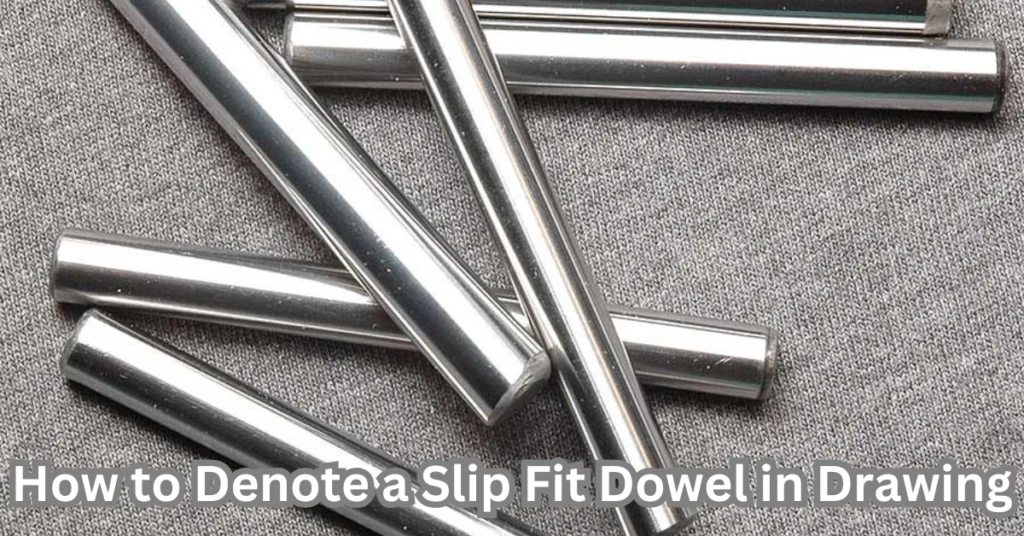Introduction to slip fit dowels
When it comes to engineering and design, precision is key—especially when using dowels. Among the various types of dowels, slip fit dowels stand out for their versatility and ease of use. Whether you’re assembling furniture or fabricating intricate machinery parts, knowing how to denote a slip fit dowel in drawing can make all the difference. But what exactly does that entail?
In this article, we’ll explore everything you need to know about slip fit dowels—from their applications to expert tips on proper denotation in technical drawings. By the end of your reading journey, you’ll be equipped with knowledge that enhances clarity in your designs and improves communication among engineers and manufacturers alike! Let’s dive into the world of slip fit dowels together.
Types of slip fits and their applications
Slip fits come in various types, each designed for specific applications. The most common type is the clearance fit. This allows a slight gap between the dowel and hole, making assembly easy while ensuring some level of alignment.
Another popular option is the transition fit. It offers a tighter tolerance than clearance fits but still provides enough space for effortless assembly. Transition fits are often used in applications where precise positioning is essential but disassembly might be necessary.
Interference fits create an intentional tightness that requires force to assemble. These are ideal for high-stress environments where parts must remain securely joined under load.
Choosing the right slip fit depends on your project requirements, such as ease of assembly or strength needed during operation. Each type plays a crucial role across industries like automotive, aerospace, and manufacturing.
Factors to consider when denoting a slip fit dowel in a drawing
When denoting a slip fit dowel in a drawing, several factors come into play to ensure clarity and precision.
First, consider the size specifications. Accurate dimensions are crucial for ensuring that the dowel fits appropriately within its intended hole or assembly.
Material type also matters. Different materials can affect tolerances and performance, so it’s important to specify whether you’re using steel, aluminum, plastic, or another substance.
Surface finish is another essential element. A smooth finish might require different tolerances compared to a rougher one.
Tolerances should be clearly defined as well. This ensures that manufacturers understand how much deviation is acceptable during production.
Always incorporate standard symbols and notations recognized in your industry. Consistency helps avoid misinterpretation during manufacturing processes.
Step-by-step guide on how to denote a slip fit dowel in a drawing
Start by selecting the appropriate drawing software or tool. Ensure you’re familiar with its features.
Next, draw the main components of your design. Include any relevant parts that will interact with the slip fit dowel.
Use a circle to represent the dowel itself. Make sure to scale it accurately according to your specifications.
Label this circle clearly as “Slip Fit Dowel.” This helps anyone reading the drawing understand its purpose instantly.
Indicate dimensions next. Specify both diameter and length in millimeters or inches, depending on your standards.
Add tolerance values adjacent to the dimension lines. Tolerances are crucial for ensuring a proper fit without interference.
If necessary, include guidelines about material types and finishes nearby for clarity and context. These details enhance understanding and reduce misinterpretation during manufacturing.
Common mistakes to avoid when denoting slip fit dowels
One of the most common mistakes is neglecting to specify tolerances. Without clear tolerance values, manufacturers may struggle with fitting, leading to potential assembly issues.
Another frequent error is using vague terminology. Terms like “slip fit” can mean different things in various contexts. Be precise about dimensions and intended applications.
Ignoring material properties can also be detrimental. Different materials expand or contract differently, affecting fit over time. Always factor in the material when creating your drawings.
Failing to include reference features is a mistake that can complicate fabrication and assembly processes. Reference points aid operators in aligning parts accurately during assembly.
Overlooking updates during design revisions can lead to inconsistencies between the drawing and actual specifications. Keeping documentation current is crucial for successful manufacturing outcomes.
Tips from experts for accurate and effective denotation
Seek clarity in your drawings. Clear, concise annotations help avoid misunderstandings. Use standardized symbols for slip fit dowels to maintain consistency.
Consider the audience reading your drawing. Engineers and fabricators may interpret details differently. Tailor your notations accordingly.
Utilize color coding where appropriate. Different colors can signify various fit types or tolerances, enhancing visual comprehension.
Always double-check dimensions before finalizing a drawing. Accurate measurements are crucial for ensuring proper assembly and function of slip-fit components.
Engage with peers for feedback on your drawings. Fresh perspectives can highlight areas that need improvement or clarification.
Keep up-to-date with industry standards and practices related to dowel fittings. This knowledge will enhance the quality of your work and ensure adherence to best practices.
Conclusion
Denoting a slip fit dowel in drawings is essential for ensuring precise assembly and functionality. By understanding the various types of slip fits and their applications, you can make informed choices that enhance your designs. If you’re wondering how to denote a slip fit dowel in drawing, it’s crucial to follow standard conventions to ensure clarity and precision.
Consider all relevant factors when denoting these components to avoid misinterpretation. Follow the step-by-step guidelines provided to create clear and effective representations. Be mindful of common mistakes that could lead to confusion or errors in production.
By applying expert tips, you will achieve accuracy in your drawings, facilitating smoother communication with team members and manufacturers alike. Mastering this skill not only improves your drafting abilities but also contributes significantly to the overall success of your projects.
With attention to detail and adherence to best practices, you’ll be well-equipped to denote slip fit dowels confidently in any drawing process.
Discover how long a football game lasts.

